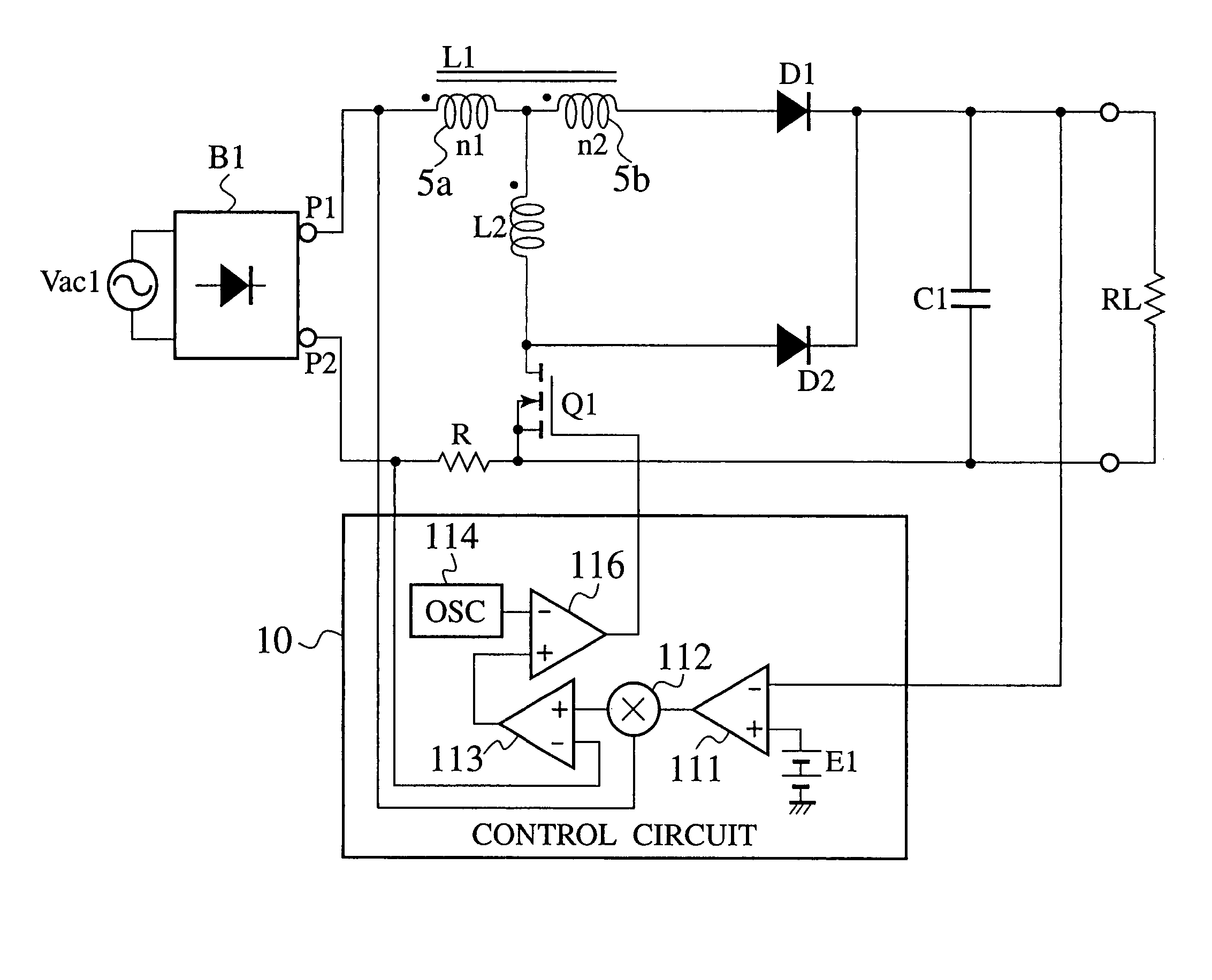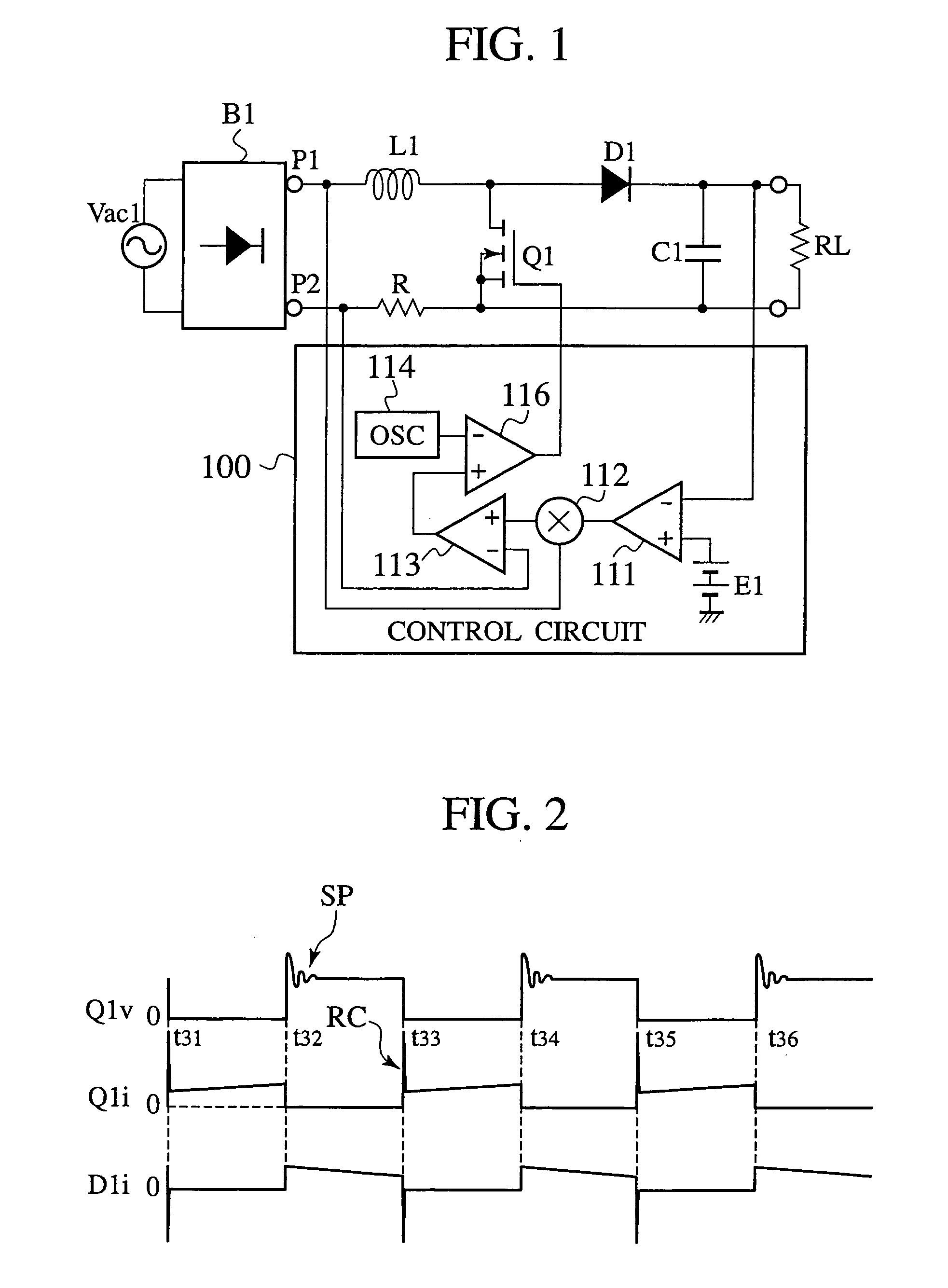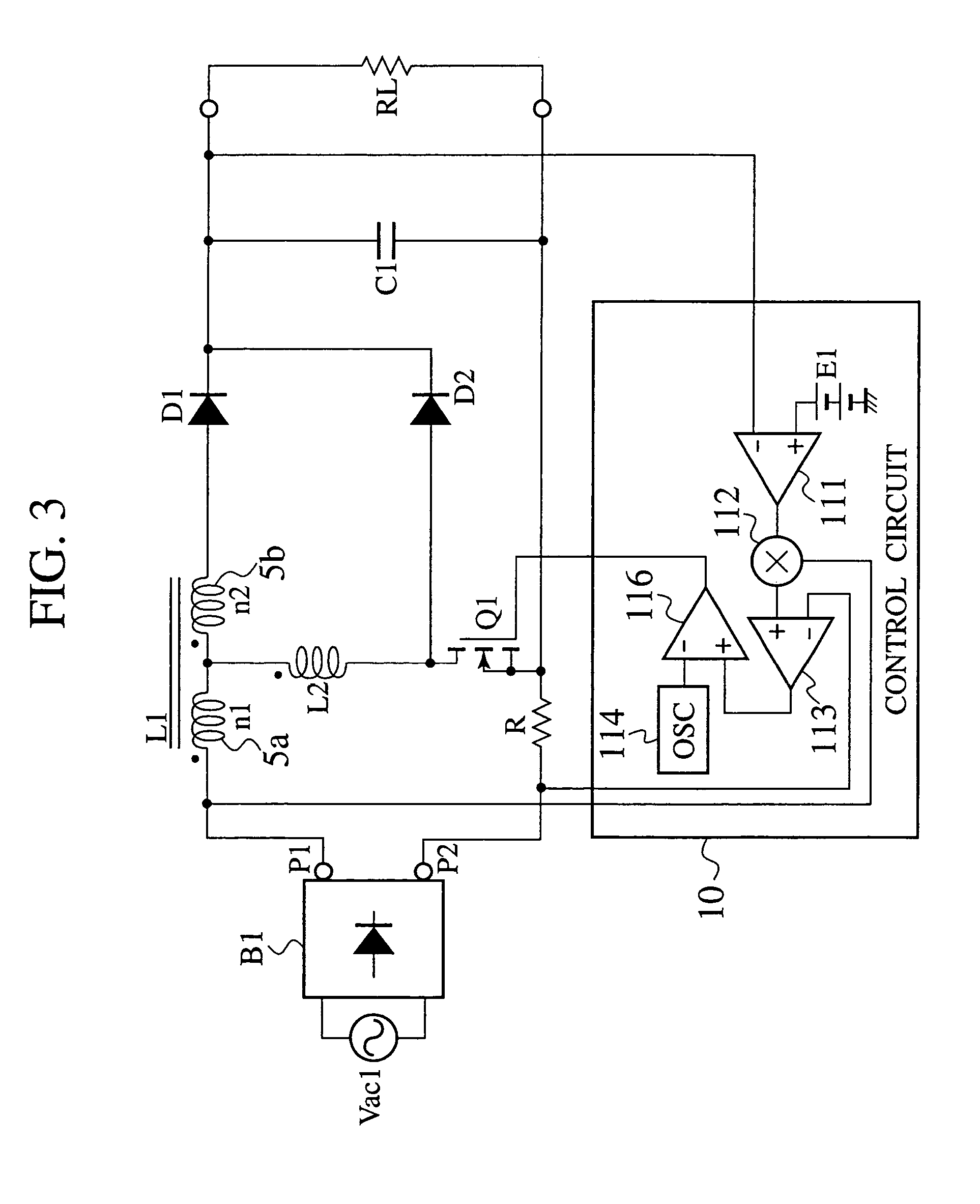Power factor correction circuit
a power factor and circuit technology, applied in the direction of electric variable regulation, process and machine control, instruments, etc., can solve the problems of increased switching loss, increased loss of cr absorber, increased loss of switch q, etc., and achieve low noise and high efficiency
- Summary
- Abstract
- Description
- Claims
- Application Information
AI Technical Summary
Benefits of technology
Problems solved by technology
Method used
Image
Examples
first example
[0149]First Example features that under circumstances where the alternating current power-supply voltage is less than a lower limit preset voltage, the switching frequency of the main switch is set to a lower limit frequency (of, for instance, 20 KHz) and under circumstances where the alternating current power-supply voltage exceeds an upper limit preset voltage, the switching frequency of the main switch is set to an upper limit frequency (of, for instance, 100 KHz) whereby under a situation where the alternating current power-supply voltage varies in a value ranging from the lower limit preset voltage to the upper limit preset voltage, the switching frequency of the main switch is gradually varied in a value ranging from the lower limit frequency to the upper limit frequency.
[0150]FIG. 21 is a circuit structural view illustrating first Example of the power factor correction circuit of the fifth embodiment. FIG. 22 is a timing chart for an alternating current power-supply voltage w...
second example
[0175]FIG. 29 is a timing chart of a switching frequency that varies depending on the alternating current power-supply voltage and the VCO in second Example of the power factor correction circuit of the fifth embodiment.
[0176]While the first Example, shown in FIG. 26, has been described with reference to an exemplary case where the VCO 115 allows the switching frequency f of the switch Q1 to be set to the lower limit frequency f12 (of, for instance, 20 KHz), second Examples, shown in FIG. 29, features that under circumstances where the alternating current power-supply voltage Vi remains in a lower level and the switching frequency lies in a value less than the lower limit frequency f12, the VCO 115 stops the operation of the main switch Q1. Under such a stopped condition, an input current is minimum, thereby suppressing the distortion of the alternating current power-supply voltage waveform to a minimal level.
third example
[0177]The third Example features that under circumstances where the alternating current power-supply voltage lies in a value less than the preset voltage, the switching frequency of the main switch is set to the lower limit frequency (of, for instance, 20 KHz) whereas when the alternating current power-supply voltage exceeds the preset voltage, the switching frequency of the main switch is set to the upper limit frequency (of, for instance, 100 KHz).
[0178]FIG. 30 is a detailed circuit structural view of the VCO of third Example of the power factor correction circuit of the fifth embodiment. In the VCO 115 shown in FIG. 30, the resistor R1 is connected to the output terminal P1 on the positive electrode side of the full-wave rectifier circuit B1, and the resistor R2 is connected to the resistor R1 in series. A comparator 115b has a “+” terminal, which is applied with a voltage at a junction between the resistors R1 and R2, and a “−” terminal applied with a reference voltage Er1, wher...
PUM
 Login to View More
Login to View More Abstract
Description
Claims
Application Information
 Login to View More
Login to View More - R&D
- Intellectual Property
- Life Sciences
- Materials
- Tech Scout
- Unparalleled Data Quality
- Higher Quality Content
- 60% Fewer Hallucinations
Browse by: Latest US Patents, China's latest patents, Technical Efficacy Thesaurus, Application Domain, Technology Topic, Popular Technical Reports.
© 2025 PatSnap. All rights reserved.Legal|Privacy policy|Modern Slavery Act Transparency Statement|Sitemap|About US| Contact US: help@patsnap.com



